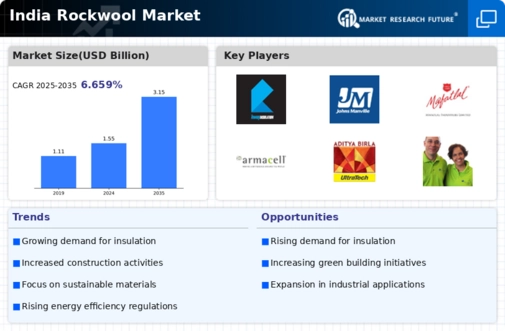The India Rockwool Market has been experiencing notable growth due to the increasing demand for thermal and acoustic insulation materials across various sectors. This market showcases a range of competitive dynamics, driven by factors such as government initiatives for energy efficiency improvements, heightened awareness about sustainable construction practices, and regulations mandating the use of fire-resistant materials. The landscape is characterized by a combination of established global players and emerging local manufacturers, each striving to advance their technological capabilities and enhance their product offerings.
Competitive strategies often include innovation in product development, strategic partnerships, and investments in research and development to optimize production processes. Understanding these dynamics is essential for stakeholders aiming to navigate the market effectively.Knauf Insulation holds a significant position in the India Rockwool Market, known for its commitment to quality and sustainability. The company has established a strong market presence with a diverse range of insulation solutions tailored to meet the varying needs of the construction and building industry in India.
One of the primary strengths of Knauf Insulation lies in its advanced manufacturing processes, which ensure high-performance products that comply with international standards. Additionally, the company's emphasis on research and development allows it to consistently innovate and adapt to changing market demands. Its extensive distribution network further enables Knauf Insulation to reach customers across India effectively, reinforcing its competitive edge in the market.Johns Manville is another key player in the India Rockwool Market, recognized for its extensive product portfolio, including mineral wool insulation and related building materials.
The company has developed a robust presence in India, bolstered by its high-quality offerings that cater to the commercial, industrial, and residential sectors. Johns Manville emphasizes sustainability with products designed to enhance energy efficiency and reduce environmental impact. The company also benefits from strong branding and reputation, reinforcing trust among customers. With a focus on teamwork, innovation, and customer satisfaction, Johns Manville continuously seeks growth opportunities through strategic mergers and acquisitions that strengthen its market position, enabling it to enhance its reach and operational capabilities in India.





















Leave a Comment